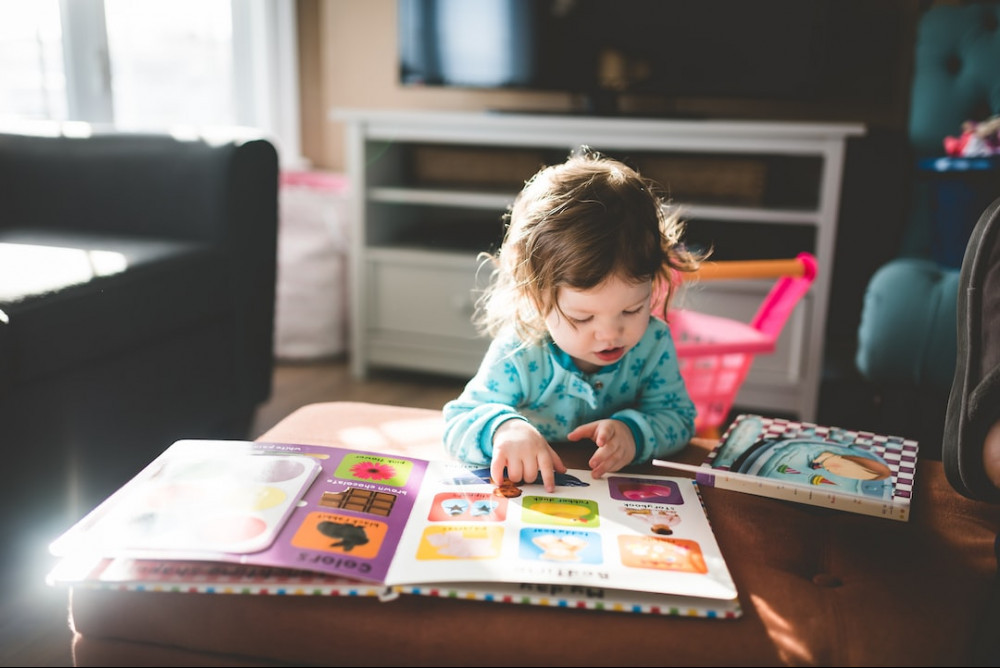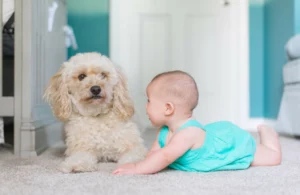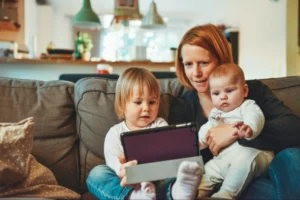
Your baby at 12 months old may show the early signs of independent walking.
He/She has better body control when lowering himself from standing. He may walk if you hold his hands or when he is
holding on to a furniture, or when he is pushing a wheeled toy. Is gaining more curiosity in trying to climb up stairs.
Confidently crawls on his hands and feet. You will the use of hands is more obvious.
Learning
His curiosity on what is around him has increased so much. Gets curious with toys that make sounds. Spends time building
with blocks and can slot simple shapes correctly into a shape-sorter toy. Long before the babies can say circle, triangle,
square, they have already learned to recognize the shapes, and can put them in the proper opening in a shape-sorer toy.
These toys can teach manual dexterity and colors. The baby may require many demonstrations and much assistance
before the mastery is achieved. Toys that require pulling, pressing, pushing and twisting encouraged babies to use their
hands in variety of ways. Before babies are able to handle some of the more complicated maneuvers, a lot of parental
demonstrations may be needed. However, once mastered, these toys provide hours of concentrated play.
Understands basic directions involving familiar actions
like “peek-a-boo”,”clap hands”, “patty cake”, “wave bye-bye”
May be able to make a mark on a paper with crayon. Scribbling with crayons provides tremendous satisfaction for many
babies. Using a tape to keep the paper in place on a table, the floor, or the use of an easel to keep the paper from sliding
all over and confiscating the crayons as soon as they are used where they should not be. will help teach their proper use.
Finger painting can be fun for some.
Babies love to put things in and take them out, with the latter skills develop before the former. You can provide the use of
empty boxes, pots and pans, wooden spoons, paper cups and plates and napkins. Fill the empty box with a variety of
small toys (but not small enough for baby to put on the mouth and choke on)
Enjoys water games and can pour water from one container to another, or just washing hands under water. This teaches
many concepts and allow the joy of water play.
For the baby who isn’t quite walking yet, put some enticing objects up out of reach, to provide incentive for pulling up
and/or cruising.
The inactive baby may need a little cajoling to become more active. You may need to get down and crawl yourself and
challenge a child to come crawling or running after you. Try a game of ‘Come and get me” or “I’m gonna get you”.
Toys that need to be pushed or pulled provide practice for those who have just begun to walk, and confidence and practice
for those that had gained the new ability. Riding toys babies can sit straddling and propel with their feet may help some
children walk.

Language
Follow basic instructions consistently like wave “bye-bye”, clap hands, peek-a-boo, Knows the names of other members of
the family. May be able to use three or four words to name familiar person, objects or animals such as cat, dog.
Has good hearing but loses interest in repetitive sounds.
Read books with your baby several times. Each session will probably be short, of no more than few minutes, as the baby’s
attention span is so limited, but will eventually build a firm foundation for the love of reading.
Social and Emotional
Ever since your baby learned to say “No”, then followed by the shaking of the head, he has been responding to everything
negatively, even to the things that he/she wants.
As hard as it is on parents, negativism is a normal and healthy part of a young child’s development. For the first time, he is
able to test his limits, exert some power, and challenge parental authority. Now he is realizing that he can be his own
person. More significantly, he is able to express opinions of his very own, clearly and distinctly, and discovered.
Learning how to say “No”, and how to shake his head are skills – and he needs to practice them, even when they are not
appropriate.The babies invariably shake their head “no” long before they nod their heads “yes”, has less to do with
negativism than with the fact that it is a less complex, more easily executed movement, which requires less coordination.
Negativism can sometimes be avoided with a little clever verbal manipulation on your part. Don’t ask a question that can
be answered by “no”. For example, instead of asking, “Would you like a banana?” try “Would you like a banana or an
apple?”. Be aware that some children will answer even multiple choice questions with a “no”.
Occasionally, a twelve-month-old will even act out as like a “terrible-two’s. May show temper when he doesn’t want
to cooperate.
However, he/she is very affectionate to the members of his family, with the hugging and the kissing.
He gets frustrated when he can’t achieve his own goal and act out hasty manner.
Cheer your baby on as new skills are mastered. Achievement for your child, while satisfying, often means more when the
recognition is present.
I want you to feel that you can reach out to me if ever you have questions or want to share ideas that you may have, related to the care of babies, growing premature babies, and the oveall health issues pertaining to the care of babies OR just drop me a comment or just say “Hello” or “what’s up”
All The Best, Maria Teresa BabiesBuddies.com
.




